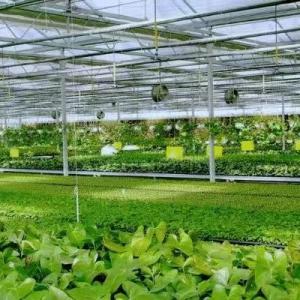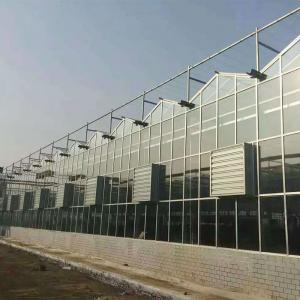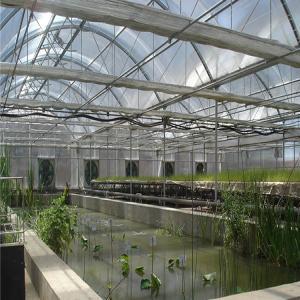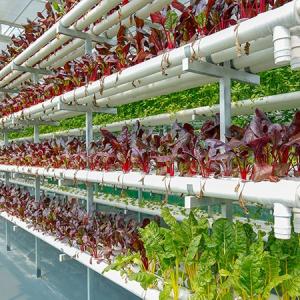Growing Tomatoes in a Tomato Greenhouse
Greenhouse tomato production in the tropics is increasingly popular because it can be done at a lower cost than growing tomatoes outdoors. It can also help reduce pest and disease outbreaks.
Good greenhouse practices can help produce high-quality tomatoes and increase your profits. In this article, we'll discuss the best-growing conditions for greenhouse tomatoes and the most important tools you need to get the job done right.
Maintaining Optimum Temperature for Growing Tomatoes in Greenhouse
Heating pipes at the tops of the plants are used to regulate the temperature of the greenhouse. These systems provide uniform temperatures to the tops of the plants, ensuring that optimal conditions are maintained for flower and fruit development.
The temperature of a tomato greenhouse plays an important role in determining how fast the plants will grow, what fruit sizes they produce and the quality of those fruits. Tomato plants are very fast-growing under optimum conditions.
When the temperature of a greenhouse is too high, tomatoes tend to bloom and fruit poorly. They may produce fewer blossoms, the blossoms may drop off the plant before they become pollinated, and the fruits will tend to have a large number of cracks, scars or holes on them.
Temperatures can be regulated by the use of heating pipes at the tops of the plants. These systems provide uniform temperatures to the tops of the plants, thus ensuring that optimum conditions are maintained for flower and fruit development.
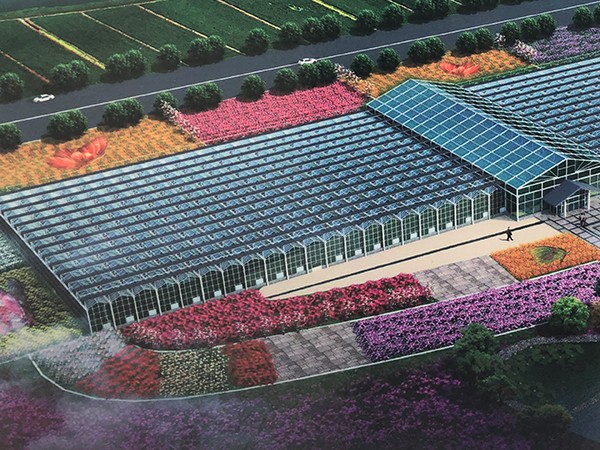
Ideal Temperatures and Relative Humidity for Tomato Greenhouse
Tomato plants need the right amount of humidity to grow their best. They also require a consistent climatic environment to avoid stress, which can affect growth and fruit development. The ideal temperatures allow the plant to absorb nutrients most efficiently and quickly.
High relative humidity allows the stomata to open and transfer water molecules between the moist air and the plants. This promotes the uptake of water and fertilizer ingredients, while also bolstering fruit cultivation.
However, low relative humidity can lead to water stress and other issues. It can also cause a plant to waste energy pumping water through its tissue, which can also slow down growth.
Tomatoes can grow well at temperatures between 21-27degC (70-82degF) during the day and 16-18degC (62-64degF) at night. High relative humidity allows the stomata to open and transfer water molecules between the moist air and the plants. This promotes the uptake of water and fertilizer ingredients, while also bolstering fruit cultivation.
Relative humidity can increase or decrease due to a variety of factors, including air exchange rates, ventilation, evaporation, and temperature changes. Low relative humidity can lead to water stress and other issues. It can cause a plant to waste energy pumping water through its tissue, which can slow down growth. Sudden increases or decreases--of as little as 20%--can cause tissue damage.
Maximizing Tomato Growth in Greenhouses with Proper Lighting Techniques
The tomato greenhouse needs plenty of light to thrive. Using supplemental lighting for the tomatoes is a great way to ensure that they receive enough light during colder days. High-pressure sodium (HPS) lights are ideal for this purpose because they encourage flowering and fruit development.
In addition to supplementary lighting, locating your tomato greenhouse north to south and away from buildings and trees can help maintain an even distribution of light throughout the day. Northern walls painted white and reflective white plastic placed between rows of tomatoes can also improve light intensity. If you want to grow tomatoes indoors, LED lighting is an excellent option.

Nutrient-Rich Soil and Proper Watering is Must for Growing Tomatoes
Tomatoes require nutrient-rich, well-draining soil to thrive. This helps keep their roots cool and hydrated, reducing the risk of diseases like root rot or fungal problems.
They do best in a warm, sunny, sheltered spot and are particularly productive when grown in a greenhouse, producing an earlier and larger crop than plants outdoors.
Tomato plants require nutrient-rich, well-draining soil. This helps keep their roots cool and hydrated, reducing the risk of diseases like root rot or fungal problems.
To ensure your tomato plants have the nutrients they need, amend the soil with compost and peat-free organic matter to promote beneficial microbes. For best results, amend the soil before you plant tomatoes, or when planting in a new area of your greenhouse.
When watering, pour the water directly onto the soil instead of sprinkling it on leaves. This will help to avoid overwatering and fungus problems, especially during hot and sunny weather.
